The Cisco UCS X-Series is the company’s newest chassis server. We have started to see longer-running blade/ chassis servers get refreshed as the industry prepares for the next generation of components. Cisco, like others, is refreshing its chassis to offer more cloud management and higher-speed networking with higher-power components.
Cisco UCS X-Series Modular Server
The Cisco UCS X-Series is the company’s blade server that is 7U in height with eight slots. Since this is a blade chassis, the concept is that one can upgrade nodes over time while retaining the ecological benefits of re-using power supplies, fans, and the chassis.
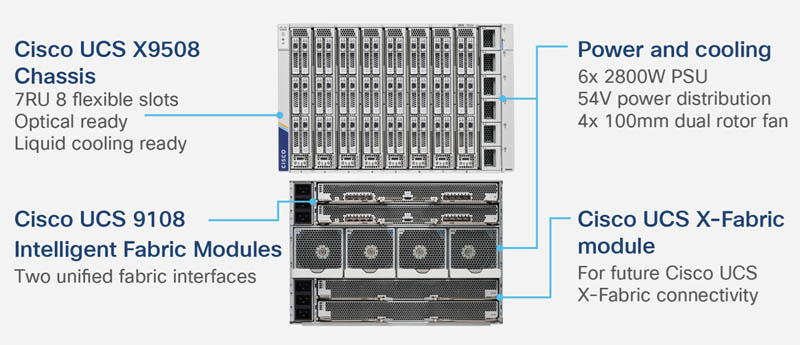
Something that is more modern with the UCS X-Series is that the enclosure uses a backplane-less design to connect the compute nodes to the network fabric. Here is a quick look at how that works.
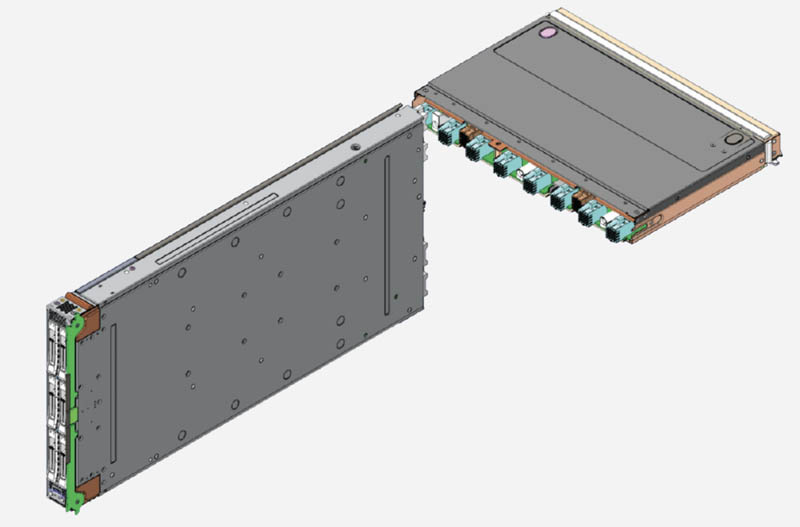
Not having a backplane is important for a few reasons. First, failed backplanes were immensely difficult to service since to get to them requires offlining multiple nodes, then getting into a large chassis. Second, older-generation blade solutions with backplanes were often limited by the PCB material and pins so that one could not upgrade to faster networking without replacing the backplane. At STH, we were the first to go in-depth in our Dell EMC PowerEdge MX review. There we can see that Dell is doing the same thing. The reason for this trend is that while we have 100GbE as common today, the future of 400GbE to the node is coming, and removing the backplane for higher reliability and future upgradeability makes a lot of sense.
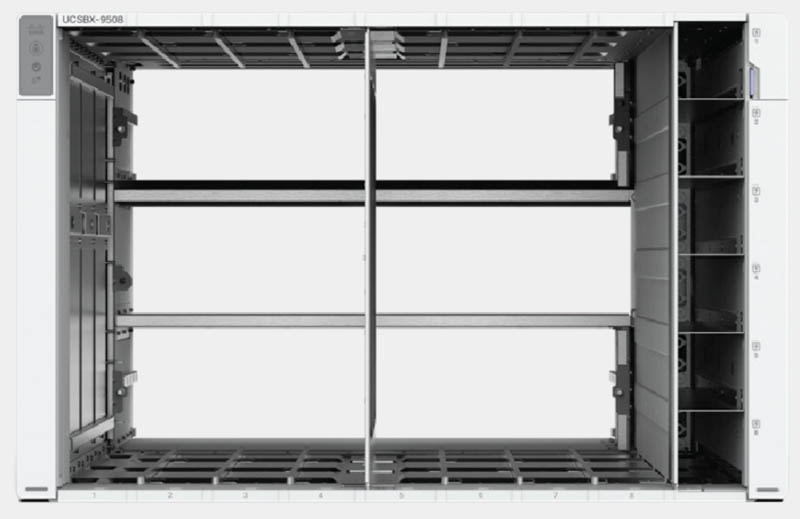
The first nodes are the dual 3rd gen Intel Xeon Scalable “Ice Lake” processor nodes. Each has two CPUs, up to 6x 2.5″ HDD/ SSDs (including NVMe), and spaces for two VICs. Cisco also has a full set of DDR4 channels and Optane PMem 200 support on the nodes.
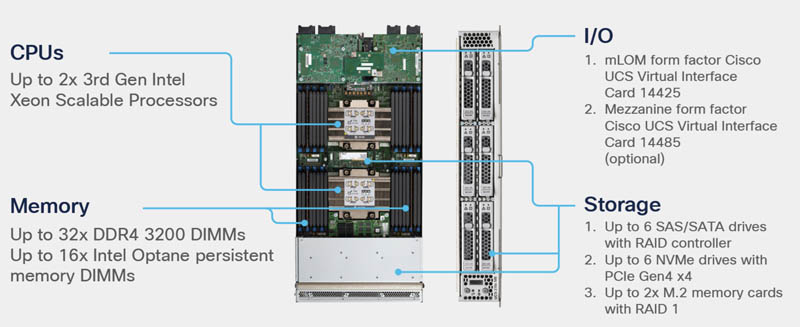
Cisco has its new VICs and includes an internal bridge between them which is something a bit more unique.
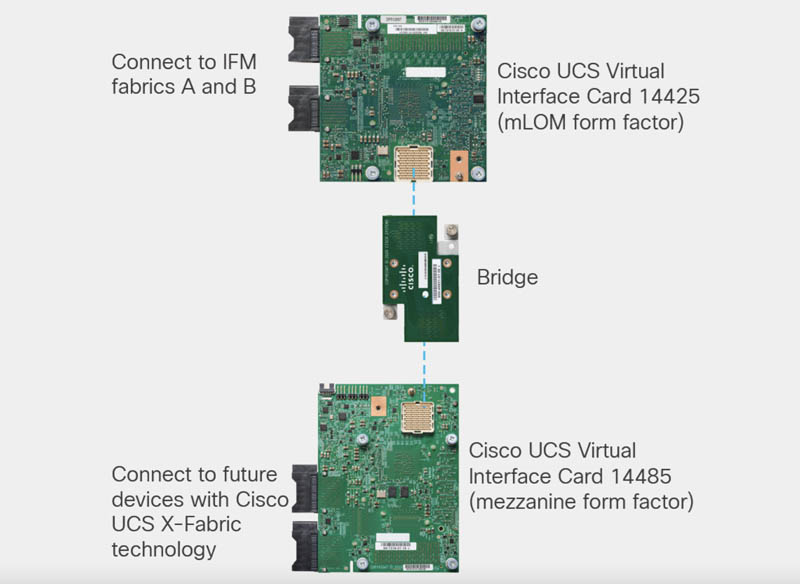
As one would imagine, Cisco has a cloud management solution for the new blade servers.
Final Words
This is not going to be an inexpensive solution and that is perhaps Cisco’s biggest challenge. The UCS line has great engineering, but the market has been moving towards lower-cost scale-out nodes. Cisco UCS is far from being known as a low-cost leader so it is really targeting higher-end enterprise and government deployments sitting alongside traditional Cisco networking infrastructure. While this is a solution targeted at Cisco’s current installed base, it is still fun to see a new solution like this.

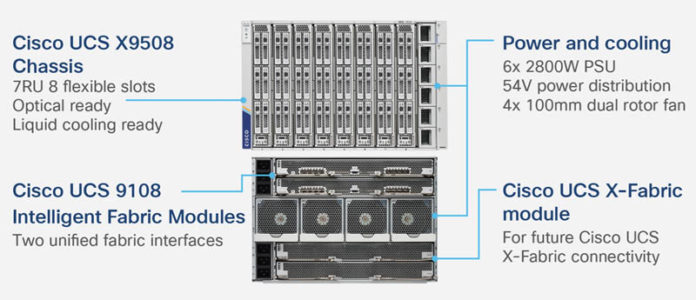



Backplane-less chassis designs are NOT NEW.
I know of a backplane-less chassis for chassis-based network concentrator cards that was marketed in 1995-1996 by a now defunct company named “Ungermann-Bass”. It was called “Geo 500” or “GeoLAN 500”, depending on who you talked to. It had product size (big & bulky), product cost (more expensive than what it planned to replace), product fit (backplane-less chassis require very close manufacturing tolerances, and it got that wrong), and lacked a compelling reason to buy it (could not answer the “Why bother?” question).
In the high tech industry it seems there is more and more of the “what is old is new again” concept.
In other words, nothing new to see here so move along.
Cisco has made the right decision by going to a backplaneless design. This is the absolute best way to future-proof the UCS. They could theoretically keep this form factor forever, just upgrading the front compute modules and rear network modules every couple of years.
That having been said, UCS is not quite the value proposition it once was. UCS came into existence in a world where compute nodes could be diskless, and boot from a large SAN-attached storage array. Flash forward a decade, and Software Define Storage is everywhere. Data centers now benefit from having storage spread out on large numbers of disks in every host. UCS X blades have six slots, which is better than the two found on a B blade, but it’s probably still not enough for a software-defined data center.
Not bad design at all. Reminds me of CompactPCI (Serial) in industrial world.
“They could theoretically keep this form factor forever, just upgrading the front compute modules and rear network modules every couple of years.”
But they wont, as there is no money in that long term.